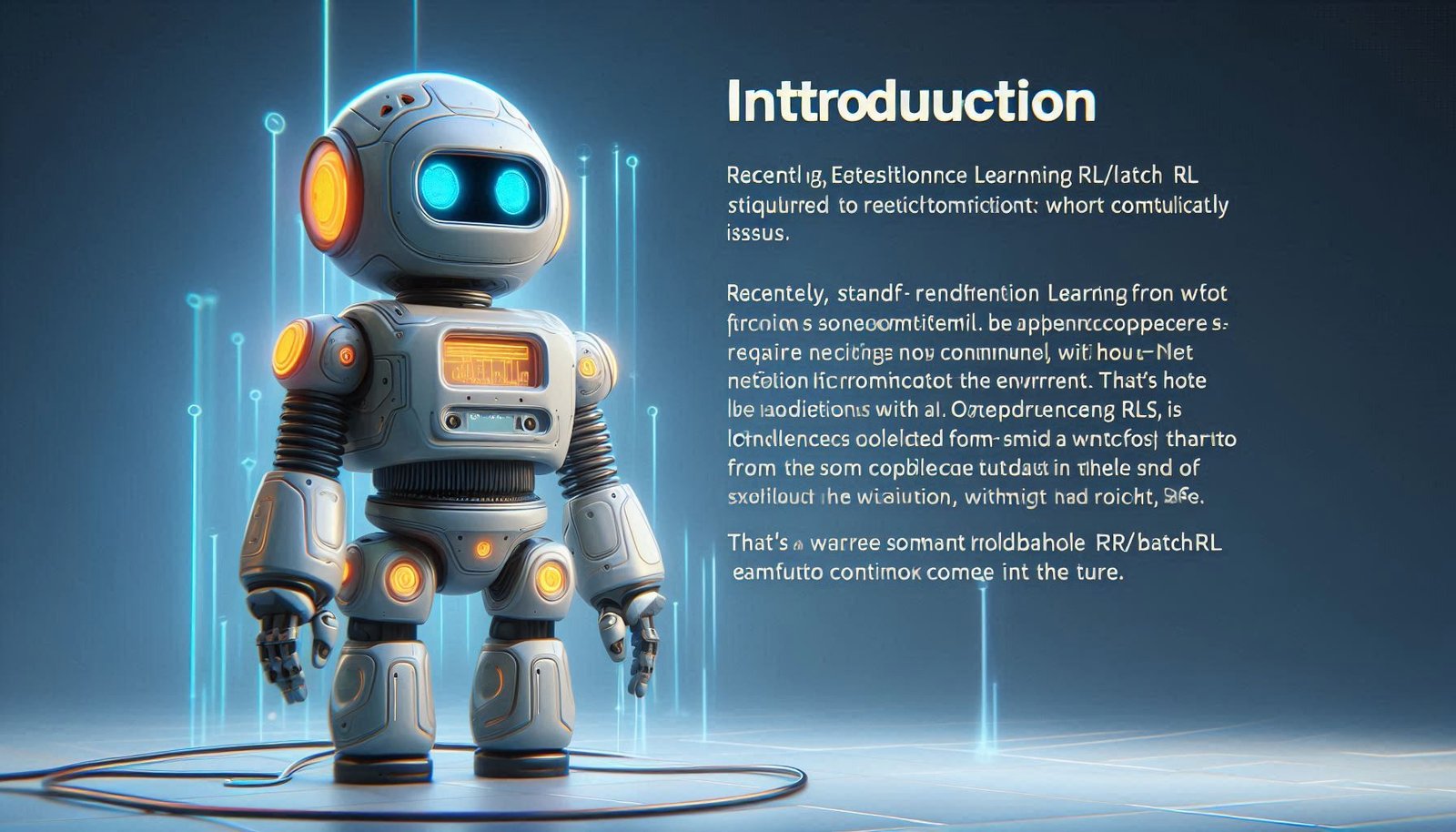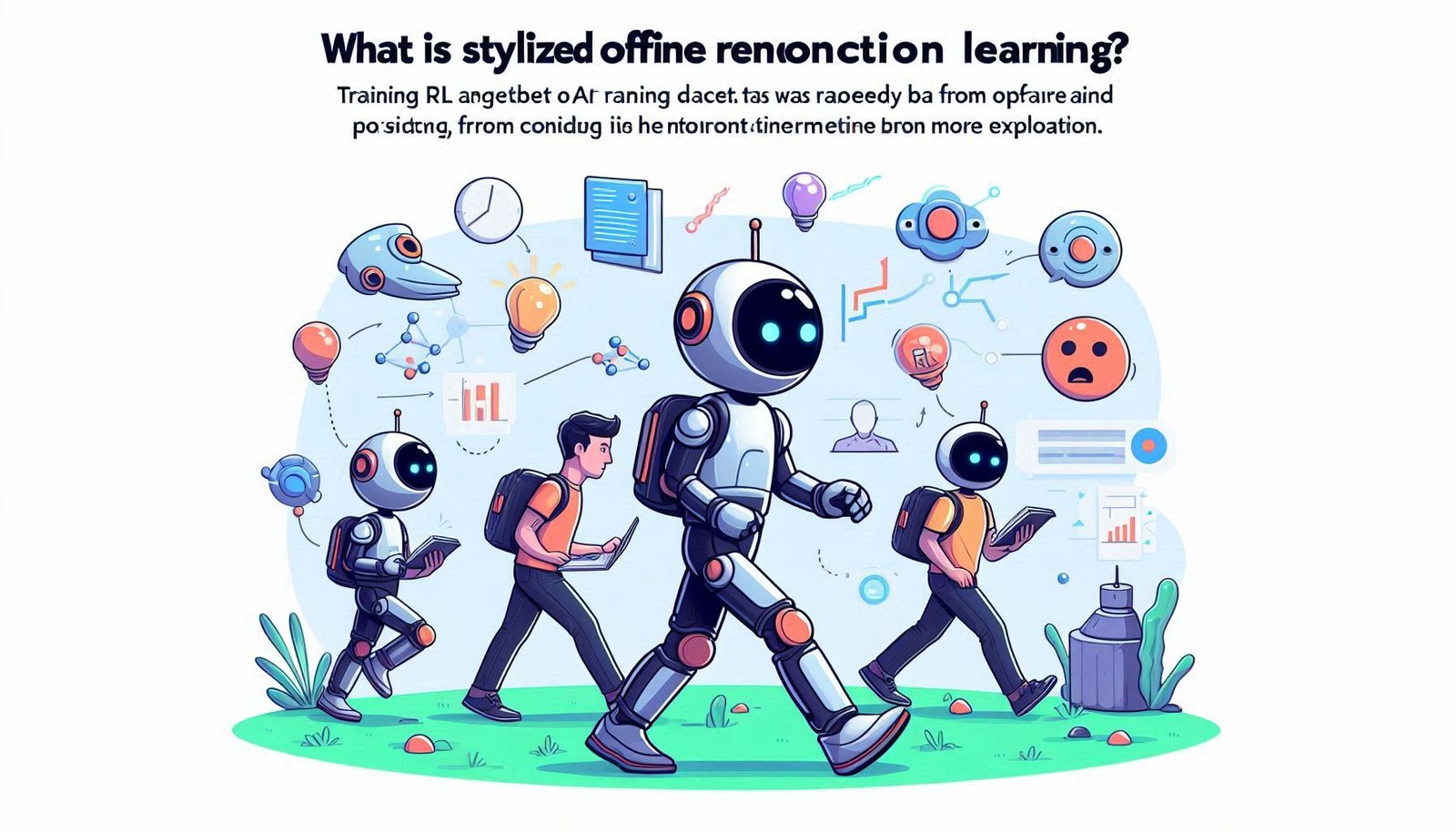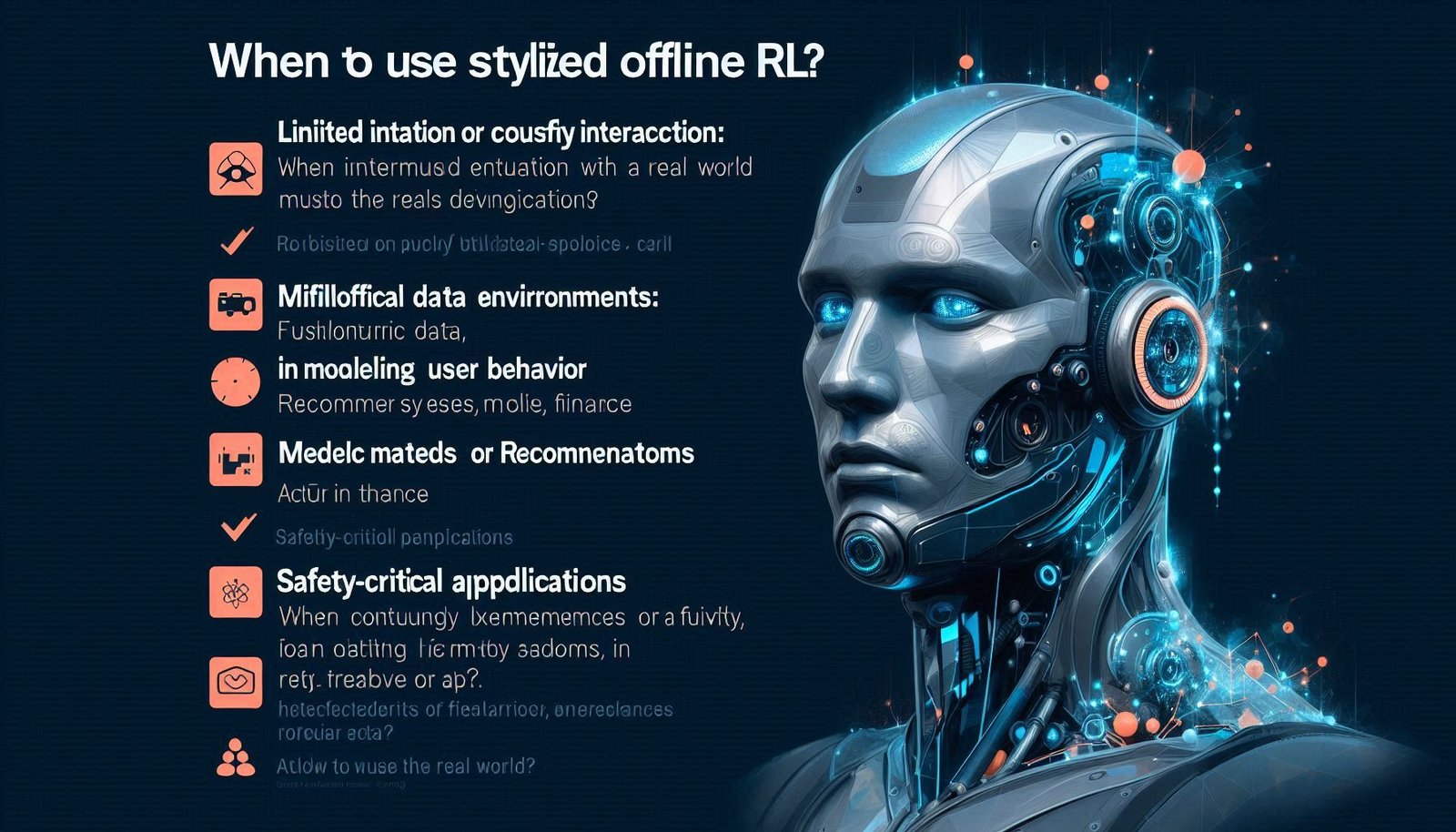Introduction
Introduction:Recently, reinforcement learning (RL) has transformed the methods with which artificial intelligence (AI) tackles complicated issues. Unfortunately, a standard RL model requires to work continuously with the environment, which may not be possible or safe. That’s where offline reinforcement learning (ORL) comes into the picture.
Offline RL/batch RL is learning from experience collected from some previously collected data without interacting with the environment itself. Stylized offline reinforcement learning is a subfield of this that aims to develop certain stylizations or variation in offline reinforcement learning.
We will also introduce some various definitions of stylized offline RL and will illustrate how stylized offline RL methods work and where we can apply them along with advantages over traditional online RL models.

What is Stylized Offline Reinforcement Learning?
Offline RL is training an RL agent based on data that has already been sampled, often from prior interactions with the environment. This enables the agent to learn and optimize its policy without conducting any more exploration.
Stylized offline RL refers to the fine-tuned versions of offline RL methods, where the agent’s learning is adjusted to work more efficiently with data-driven models. These methods often involve creative alterations to existing RL algorithms to enhance their learning abilities or improve their behavior in the context of limited or biased data.
Read more: Is It Necessary to Learn Python for ML 2025

Key Features of Stylized Offline RL:
- No Interaction with the Environment: The model learns purely from the historical data.
- Data Efficiency: Stylized offline RL algorithms aim to extract maximum value from the data.
- Safety and Risk Management: They allow training without risking negative outcomes in real-world scenarios, such as robotics or healthcare.
How Does Stylized Offline RL Work?
Stylized offline reinforcement learning involves several key components that make it distinct from traditional RL. Below are the main steps involved in this process:
1. Data Collection
Before any learning begins, a large dataset must be collected. This data can come from previous real-world interactions or simulations, representing the state-action pairs observed by the agent.
- Sources of Data:
- Pre-existing logs from human interactions
- Simulation environments or models
- Real-world datasets
2. Offline Policy Evaluation
The collected dataset is used to evaluate how well the agent’s current policy performs without any further exploration. The evaluation can be done using different techniques, such as:
- Value Function Approximation: Estimating the expected return of the agent’s actions in various states.
- Importance Sampling: Estimating the importance of the observed actions by comparing them with the agent’s current policy.
3. Model Learning
During this phase, stylized offline RL algorithms learn a model that maps the agent’s past experiences to future actions. The algorithms are designed to handle biases in the dataset, such as imperfect or limited coverage of states and actions.
- Handling Distributional Shifts: A key challenge in offline RL is the fact that the collected data may not cover all possible scenarios. Stylized algorithms employ techniques to deal with distributional shifts in the data, ensuring better generalization.
4. Policy Improvement
Once the model has been trained, the agent’s policy is updated or improved based on the feedback received from the offline data. Stylized offline RL algorithms often include enhancements such as:
- Regularization: To prevent overfitting and help the agent generalize from the data.
- Conservative Updates: To make safer and more stable policy updates by limiting drastic changes.
Read more: Innovative Uses of Machine Learning in Fashion
Stylized Offline RL vs. Traditional RL
To understand the value of stylized offline reinforcement learning, let’s compare it with traditional online RL.
Key Differences Between Stylized Offline RL and Traditional RL
| Feature | Stylized Offline RL | Traditional Online RL |
|---|---|---|
| Data Availability | Learns from pre-collected data (offline) | Requires real-time interaction with the environment |
| Exploration | No exploration, based on fixed dataset | Continuous exploration and interaction with the environment |
| Safety | Safer as it avoids risky real-time interaction | Potentially dangerous due to real-time actions |
| Data Efficiency | Highly data-efficient, leverages existing data | Can be inefficient, requires large volumes of real-time data |
| Risk of Bias | Can suffer from biases in the training data | Biases arise but can be mitigated through exploration |
When to Use Stylized Offline RL?
- Limited or Costly Interaction: When interaction with the real world must be limited or delayed, like in robotics, medical, or autonomous driving applications.
- Historical Data Environments: In fields with plentiful historical data, such as modeling user behavior, recommender systems, and finance.
- Safety-Critical Applications: When conducting physical experiments or testing in the real-world can pose dangers or is prevalence is not viable.

Benefits of Stylized Offline RL
Stylized offline reinforcement learning offers several advantages over traditional RL models:
1. Safety and Cost-Effectiveness
- No need for active exploration, which can be dangerous or expensive, especially in fields like healthcare or autonomous driving.
- The model can be trained using historical data, reducing the cost associated with generating new data through trial and error.
2. Faster Learning
- Since the agent does not need to explore new environments, the learning process can be much faster. It can start learning right away from existing datasets.
3. Improved Generalization
- Stylized offline RL algorithms are designed to overcome distributional shifts and biases in the data, leading to better generalization across unseen states and actions.
4. Better Use of Available Data
- It leverages all the information available in the dataset, ensuring that the model makes the most out of even limited or imperfect data.
Challenges of Stylized Offline RL
Despite its many advantages, stylized offline RL comes with its own set of challenges:
1. Bias in Data
-
If the training is based on biased dataset, the agent would learn sub-optimal policies that failure to generalize to unseen scenarios.
2. Exploration Limitation
- Lack of exploration may result in the agent failing to discover optimal strategies or missing out on opportunities in underrepresented areas of the state space.
3. Computational Complexity
- Some stylized offline RL techniques, such as regularization and importance sampling, can be computationally expensive, limiting scalability.
Applications of Stylized Offline RL
Stylized offline RL has seen increased use in a variety of domains where standard RL approaches are impractical or even infeasible;
1. Autonomous Vehicles
-
For example, offline RL could allow autonomous vehicles to learn from simulated experiences or past driving logs, helping them to optimize their decision-making with no real-world risk involved.
2. Healthcare
- In medical applications, offline RL can help optimize treatment policies based on historical patient data without the need for potentially harmful experiments.
3. Robotics
-
The offline RL application has greatly advantages in robotics which allows robots to learn from past experience rather than doing trial and error and in this way avoids damaging real robots and humans.
4. Finance
-
There are applications in financial markets where offline RL is used to study historical market data and develop trading strategies without constant interaction with live markets.
(FAQs)
1. What is the difference between offline RL and online RL?
For example, offline RL learns from a static dataset, whereas the online RL learns by directly interacting with the environment.
2. Can offline RL be used in safety-critical applications?
Really well suited for some safety critical applications since can avoid the issues of interaction in real-time.
3. What challenges does stylized offline RL face?
Stylized offline RL can struggle with biases in the training data, limited exploration, and high computational costs.
4. Is stylized offline RL more efficient than online RL?
Stylized offline RL can be more efficient in scenarios with limited or expensive real-time interaction, as it leverages existing data.
5. Is offline RL limited to specific industries?
No, offline RL is applicable in different industries such as healthcare, robotics, autonomous driving, finance etc.
Conclusion
Stylized Offline Reinforcement Learning is a promising technique that can achieve great success over regular RL models. Learning from pre-compiled data without dependence on real-time interactions, makes it applicable to safety-critical domains as well as any environment in which data collection is expensive, infeasible, or both. That said, data is never drama free and comes with its share of obstacles, including data bias and the requirement for efficient algorithms to work with lots and lots of data.
By carefully tuning offline RL models and overcoming these challenges, we can harness its full potential and drive advancements across a variety of industries. As AI continues to evolve, stylized offline RL will undoubtedly play an important role in shaping the future of intelligent systems.